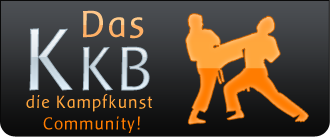Michael Tang veröffentlichte am Montag, den 10.04.2017 04:08
UTC+01:00 folgenden Text:
17. 六點半棍 Luk Dim Boon Pole
Float like a Butterfly, Sting like a Bee
When we talk of Tang Family Weng Chun, we just cannot miss the pole form. Frankly speaking, little was known about the Tang Yik Luk Dim Boon, except that there was a "King of Pole" with great techniques in Luk Dim Boon, it was just like a myth.
It was a great gift that the King of Pole did allow his students to video him showing what Luk Dim Boon was and what a man could do with the pole. It was great also that he did not hide anything, what was rare for him as master openly share his life time treasure and kept the pearl shining in history. I released his video to Andreas Hoffmann in early 2000, and further allowed Ming Pao Weekly Magazine to publicly posted his video and that started quite a bit of thought ripples for people to think about the Luk Dim Boon Pole.
What is Tang Yik Luk Dim Boon?
I quoted in the opening by the great world boxing champion, who was the one that I truly admired what I was learning from Tang Yik, and it truly represented Tang Yik with his pole. Incidentally, Tang Yik got a nick name, also, the Mad Bee!!!
Let us start with the fundamentals first. "Luk Dim Boon" in Chinese means Six and Half Points. They represent seven movements which constitued the fundamental of the entire pole form. As such, the seven movements are called Seeds of the Pole. They are
纒 撕 抽 彈 剔 割 槍 [ Cin Si Cau Taan Tik Got Coeng ] , six attacking (or hitting) and defined as the full point. 纒 [ Cin ] is a transitional, non-attacking movement and is call the half point.
The "seeds of pole" appear many times in the form and also constituted as the "constituent elements" of many of the movements in the entire pole form. But the sequence of Luk Dim Boon in the pole form is different to the above. The sequence of the Seeds of Pole is based on the level of "Power" exhibited, starting with the 纏 [ Cin ], increasing to 撕 [ Si ], and finishing on the 槍 [ Coeng ], which demands highest power with Openness. But if one follows the above sequence, one would end up in an open footwork and needs another movement to get back to the "home" position. Also, one should realise that the 纒 撕 抽 [ Cin Si Cau ] and 彈 [ Taan ] are all practiced with the pole pivoted on the thigh while the last three are with the hands and pole extended, either at the start or finishing. This forms a good grouping. However, with the pole movement in the form, if it finishes with any of the last three, the pole will be off the thigh and one has to do another movement to get the pole back onto the starting posture, that is pole resting on the thigh.
Without going into details of the Luk Dim Boon Pole, a few points of importance. One should realise that the Luk Dim Boon is NOT for battle-field application. It is for self-defence of a day-to-day use (of course I do not want to meant we will have a fight day after day!!!). Tang Yik told me and I want stress an important instruction from Tang Yik - Luk Dim Boon should be targeted to hit the hand to disable the attacker. One might also use the 剔 [ Tik ] which should only be targeted at the knee or the shoulder, never ever try to hit at the head or the centre of the body. The Cheung is too dangerous as it would easily kill someone, even with an armour.
Mobility is the key essence of the Luk Dim Boon and one could see the beauty of Tang Yik's movement on his tip-toe, just like a Ballet Dancer. It is body power. The pole is an extension of body, with the arms as a link between body power and the pole.
Quelle:
https://www.facebook.com/groups/1936...0212855223188/




 Mit Zitat antworten
Mit Zitat antworten

